You’re spending more on energy bills than necessary if your rental properties still use traditional thermostats. Smart thermostats can slash your heating and cooling costs by up to 15% annually while keeping tenants comfortable and satisfied. They also give you remote control capabilities that traditional units simply can’t match. But there’s something even more compelling about these devices that most landlords don’t realize until they’ve made the switch.
Why Smart Thermostats Matter for Rental Property Owners

While rental property owners constantly seek ways to maximize profits and minimize expenses, smart thermostats offer a compelling solution that addresses both goals simultaneously.
You’ll discover that these devices can slash your energy costs by 10-15% annually, translating to $131-145 in yearly savings per unit. The advanced control capabilities allow you to monitor and adjust temperatures remotely, ensuring energy efficiency in vacant units while preventing unnecessary heating and cooling expenses.
Beyond energy savings, smart thermostats markedly enhance tenant comfort through automated temperature management. This improvement leads to higher tenant satisfaction, reduced turnover rates, and increased property value.
Property managers consistently report that tech-savvy renters are drawn to these modern amenities, enabling you to attract quality tenants and potentially command higher rental rates in competitive markets.
Energy Cost Reduction Benefits for Landlords
You’ll see immediate impact on your bottom line when smart thermostats cut your utility bills by 10-15% annually.
Your HVAC systems won’t work as hard thanks to optimized temperature control, which means fewer repair calls and lower maintenance costs.
You’re also making a smart investment since these energy-efficient upgrades boost your property’s overall value in the long run.
Lower Utility Bills
Since utility costs represent one of the largest ongoing expenses for rental properties, smart thermostats offer landlords a practical solution that directly impacts their bottom line.
You’ll see immediate results as these devices optimize your HVAC systems automatically, reducing unnecessary energy consumption by 10-15% annually. Smart thermostats learn tenant patterns and adjust temperatures accordingly, ensuring you’re not heating or cooling empty units.
The detailed energy usage reports provide valuable insights into consumption patterns across your properties. You can identify which units consume excessive energy and address inefficiencies quickly.
With Nest users saving $131-$145 annually, you’ll multiply these energy savings across multiple rental units. This technology transforms utility management from a reactive expense into a proactive investment that consistently delivers lower utility bills.
Reduced HVAC Maintenance
Beyond immediate energy savings, smart thermostats deliver substantial reductions in HVAC maintenance costs by enhancing system performance and minimizing equipment wear.
You’ll extend your heating and cooling systems’ lifespan while cutting repair expenses through automated efficiency controls.
Energy monitoring features help you identify irregular performance patterns, enabling proactive maintenance that prevents costly breakdowns.
You’ll receive timely alerts for filter replacements and system checks, ensuring peak operation year-round.
Smart thermostats reduce HVAC system usage by eliminating unnecessary heating and cooling in unoccupied units.
This decreased runtime translates to fewer maintenance requirements and lower utility bills.
Studies demonstrate 10-15% annual energy savings, reducing strain on your equipment while minimizing repair frequency and costs for maximum profitability.
Property Value Increase
Installing smart thermostats transforms your rental properties into more valuable assets while generating immediate returns on investment.
These devices boost property value increase by positioning your rental properties as modern, tech-forward investments that attract quality tenants willing to pay premium rents.
Smart thermostats signal energy efficiency and contemporary living standards, differentiating your units from competitors lacking these features.
You’ll command higher rental rates while marketing your properties as environmentally conscious and cost-effective for tenants.
The energy savings generated through optimized heating and cooling systems create measurable cost savings that directly impact your bottom line.
When prospective tenants see smart thermostats, they recognize reduced utility expenses and enhanced comfort control, making your rental properties more desirable in competitive markets.
Tenant Satisfaction and Retention Advantages
You’ll find that smart thermostats greatly boost tenant satisfaction by providing the modern comfort features today’s renters expect.
Your tenants will appreciate the reduced utility bills that come from optimized energy usage, making your property more attractive financially.
These benefits translate directly into lower turnover rates, as satisfied tenants who enjoy both comfort and savings are much more likely to renew their leases.
Modern Comfort Attracts Tenants
Today’s renters expect more than basic heating and cooling systems—they want smart technology that enhances their daily lives. Smart thermostats deliver modern comfort that attracts quality tenants willing to pay premium rents. These devices offer energy savings averaging 8% while providing advanced features tenants crave.
| Feature | Benefit | Impact |
|---|---|---|
| Remote Access | Smartphone control | Convenience anywhere |
| Voice Control | Hands-free operation | Enhanced accessibility |
| Automated Settings | Ideal comfort | Reduced manual adjustments |
| Energy Monitoring | Usage tracking | Cost awareness |
Your properties stand out when you offer smart thermostats with voice control compatibility and remote access capabilities. Tenants appreciate controlling their environment effortlessly, leading to improved tenant satisfaction and longer lease renewals. Modern comfort features transform standard rentals into desirable homes that command higher rents.
Reduced Utility Bills
Because smart thermostats reduce heating and cooling costs by 10-15% annually, your tenants save $131 to $145 per year on utility bills—a substantial benefit that directly impacts their monthly budgets.
These reduced utility bills create multiple advantages for your rental business:
- Enhanced tenant satisfaction through lower monthly expenses and improved comfort levels
- Competitive rent prices become possible when you can market properties with lower operating costs
- Energy usage reports help tenants understand their consumption patterns, fostering responsible usage habits
- Improved retention rates result from tenants appreciating both the energy savings and modern amenities
Smart thermostats transform utility costs from a tenant burden into a property advantage, making your rentals more attractive while supporting long-term occupancy.
Lower Turnover Rates
When tenants enjoy consistent comfort and lower monthly expenses, they’re markedly more likely to renew their leases rather than search for new housing. Smart thermostats notably boost tenant satisfaction by delivering automated comfort and lower utility bills, creating compelling reasons for tenants to stay put.
| Benefit | Impact on Retention |
|---|---|
| 8% heating/cooling savings | Higher lease renewal rates |
| Remote access convenience | Increased tenant satisfaction |
| Voice assistant compatibility | Modern living appeal |
| Consistent temperature control | Enhanced comfort experience |
Properties with energy-efficient features like smart thermostats are viewed as modern and desirable, making your units stand out in competitive rental markets. The convenience of remote access and automated climate control creates positive rental experiences that tenants value. By reducing turnover rates, you’ll save on vacancy costs, marketing expenses, and tenant screening processes while maintaining steady rental income.
Property Value Enhancement Through Smart Technology
While smart thermostats deliver immediate energy savings, they’re also powerful tools for boosting your property’s market value and rental income potential.
These modern devices transform your rental into an attractive, tech-forward living space that commands premium rates.
Smart thermostats enhance property value through several key mechanisms:
- Premium Rent Justification – Properties with smart technology can command 5-10% higher rent prices compared to similar units without these features.
- Reduced Energy Costs – Annual savings of $131-$145 make your property more appealing to budget-conscious tenants seeking energy efficiency.
- Modern Living Experience – Tech-savvy millennials and Gen Z renters prioritize smart features, leading to higher tenant satisfaction and competitive advantage.
- Lower Vacancy Rates – Energy-efficient properties experience reduced turnover as tenants increasingly value sustainability and convenience.
Remote Monitoring and Control Capabilities
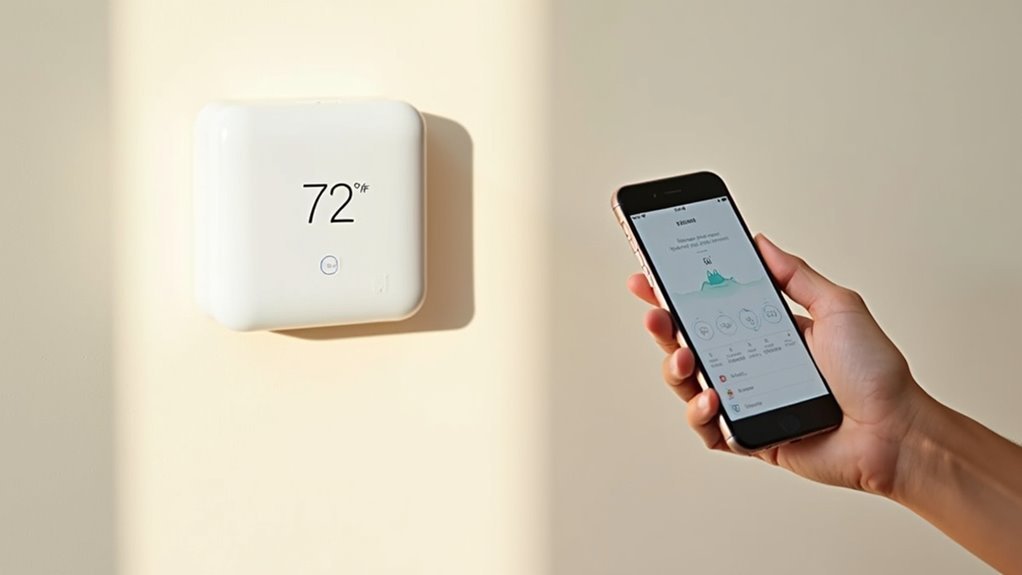
Smart thermostats revolutionize property management by putting complete climate control at your fingertips through intuitive smartphone apps.
You’ll gain remote monitoring capabilities that let you adjust temperature settings from anywhere with internet access, ensuring ideal comfort while maximizing energy savings.
These smart thermostats feature geofencing technology that automatically responds when tenants leave or arrive, eliminating wasted energy from heating empty units.
Geofencing technology automatically adjusts temperature settings based on tenant presence, preventing energy waste in vacant units.
Real-time energy usage tracking provides valuable insights into consumption patterns, helping you identify cost-saving opportunities.
Voice control compatibility with Amazon Alexa and Google Assistant enables hands-free management of multiple properties.
You’ll receive thorough energy reports that track utility costs and reveal trends, empowering data-driven decisions for improved property management and enhanced tenant satisfaction.
Essential Requirements for Smart Thermostat Installation
Before diving into installation, you’ll need to confirm your HVAC system’s compatibility with smart thermostat technology. Most systems work seamlessly, but some smart thermostat installation projects require specific setups like a C-wire for continuous power and enhanced app control functionality.
Here’s what you’ll need for successful DIY installation:
- Basic tools – Screwdriver, drill if mounting new brackets, and wire labels for organized connections
- Documentation approach – Photograph existing wiring and label wires according to terminal letters before disconnection
- Network requirements – Stable 2.4GHz Wi-Fi connection for smartphone app setup and remote monitoring
- Time allocation – Plan 30-60 minutes depending on your experience level and HVAC system complexity
Proper preparation guarantees smooth installation and maximizes your energy savings potential through smart technology integration.
Compatibility Assessment for Existing HVAC Systems
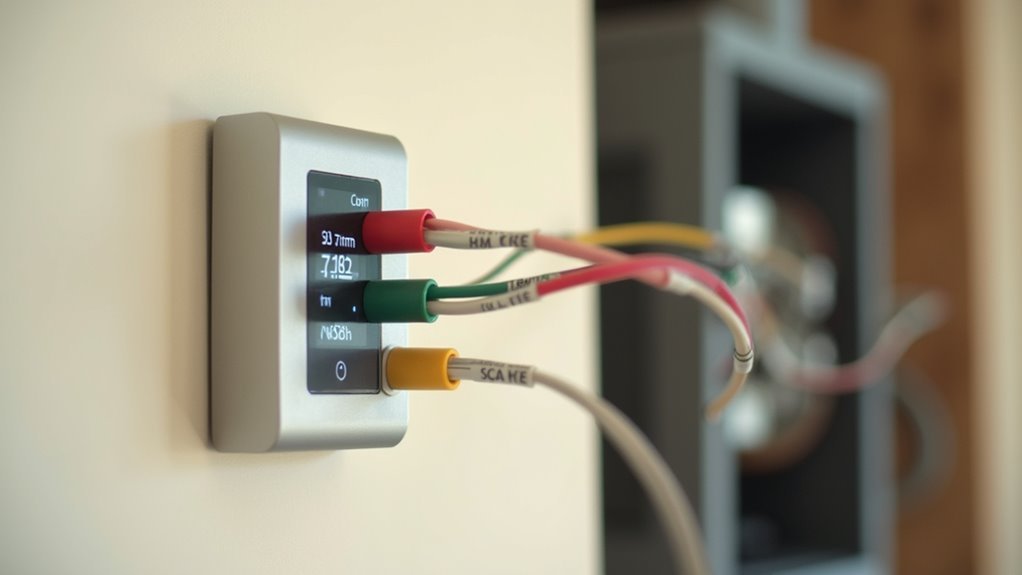
Understanding your HVAC system’s specifications forms the foundation for selecting the right smart thermostat. Your compatibility assessment begins with identifying your system type—whether you’re working with central air, radiant heating, or heat pumps. Not all smart thermostats support every HVAC systems configuration.
Check for a C-wire, which provides continuous power to smart thermostats. Without one, you’ll need adapters or professional installation to guarantee proper functionality.
Verify your system’s voltage, as most smart thermostats require 24-volt systems rather than older high-voltage setups.
For multi-zone systems, confirm whether your chosen thermostat supports zone control or requires additional components.
Review manufacturer specifications thoroughly before installation to avoid compatibility issues that could prevent ideal energy savings performance.
Top Smart Thermostat Models for Rental Properties
You’ll find smart thermostats for rental properties fall into two main categories: budget-friendly models under $100 and premium options with advanced features.
Budget models like the Sensi Smart Thermostat offer essential remote control and energy-saving functions without breaking your investment budget.
Premium thermostats such as the Nest and Ecobee provide sophisticated learning capabilities, room-specific sensors, and geofencing that can deliver greater energy savings and tenant satisfaction.
Budget-Friendly Rental Options
When selecting smart thermostats for rental properties, you’ll want models that balance affordability with the features tenants expect while delivering measurable energy savings.
Here are four budget-friendly rental options that maximize value:
- Sensi Smart Thermostat – Priced under $100, this model offers geofencing capabilities and mobile app control, making temperature management effortless for tenants while keeping costs low.
- GoControl Thermostat GC-TBZ48 – Battery-powered design eliminates C-wire installation requirements, reducing setup costs while maintaining compatibility with most central HVAC systems.
- Honeywell Home T6 Pro – Features customizable settings and geofencing capabilities that work across various HVAC setups, helping reduce energy costs effectively.
- Stelpro Ki Electronic Thermostat – Specifically designed for high-voltage heating systems, claiming up to 20% energy savings for multifamily properties.
Premium Features Comparison
The landscape of premium smart thermostats reveals distinct advantages that can significantly impact your rental property’s appeal and operating costs.
When comparing advanced features across top models, you’ll find the Nest Thermostat’s learning capabilities deliver $131-$145 in annual energy savings through behavioral adaptation.
Ecobee’s multi-room sensors provide superior temperature control throughout your property, potentially reducing costs by 26% annually while enhancing tenant satisfaction.
Honeywell’s geofencing technology offers intelligent remote control that adjusts settings based on occupancy, maximizing efficiency without sacrificing comfort.
For rental properties requiring high-voltage compatibility, Stelpro’s Ki Electronic model integrates seamlessly with smart home ecosystems.
These smart thermostats transform basic climate control into sophisticated energy savings systems that benefit both landlords and tenants.
Step-by-Step Installation Process
Installing a smart thermostat requires careful attention to safety and proper wire connections to guarantee successful operation.
The installation process for smart thermostats involves systematic steps that’ll help you shift from your existing thermostat while maintaining HVAC compatibility and maximizing energy savings.
- Turn off HVAC power at the breaker to prevent electrical shocks during installation.
- Remove your existing thermostat by detaching the faceplate and labeling wires according to their terminal letters (R, Rc, G, Y, W, C).
- Install the new base plate securely to the wall and connect labeled wires to corresponding terminals.
- Verify system compatibility using a compatibility checker or consult an HVAC professional.
Basic installation typically takes 30-60 minutes, with additional configuration requiring another 30 minutes for peak functionality.
Programming Strategies for Maximum Energy Savings
Once you’ve installed your smart thermostat, you’ll need to program it strategically to access maximum energy savings.
Schedule optimization techniques allow you to set precise temperature adjustments based on your tenants’ daily routines, while automated energy controls can make real-time decisions without manual intervention.
These programming features work together to reduce energy consumption during vacant periods and maintain comfort when occupants are present.
Schedule Optimization Techniques
When you master schedule optimization techniques, you’ll release your smart thermostat’s full potential for energy savings while maintaining comfort. These advanced strategies go beyond basic programming to create truly efficient heating and cooling patterns.
- Implement early-start scheduling to reach desired temperatures exactly when tenants arrive, preventing energy waste during vacant periods while ensuring immediate comfort upon return.
- Deploy geofencing technology that automatically switches to energy-saving modes when tenants leave and restores comfort levels as they approach the property.
- Set strategic eco temperatures around 55°F in winter and 85°F in summer during vacancy periods, balancing substantial energy savings with essential property protection.
- Analyze energy usage reports regularly to fine-tune your occupancy schedule and identify additional optimization opportunities for maximum efficiency.
Automated Energy Controls
Smart thermostats revolutionize energy management through sophisticated automated controls that eliminate guesswork from temperature regulation. These devices use learning algorithms to analyze your household’s occupancy patterns, delivering automated adjustments that save 8% on heating and cooling bills annually.
You’ll benefit from geofencing technology that automatically switches to energy-saving mode when tenants leave, reducing unnecessary consumption.
Setting reasonable eco temperatures balances tenant comfort with efficiency, generating $131 to $145 yearly savings.
Energy monitoring features provide detailed consumption reports, empowering you to make proactive adjustments.
Early-start scheduling guarantees homes reach desired temperatures precisely when needed, maximizing comfort while minimizing waste.
These smart thermostats create seamless energy savings without sacrificing tenant satisfaction or requiring constant manual intervention.
Best Practices for Temperature Control Settings
To maximize your smart thermostat’s energy-saving potential, you’ll need to establish ideal temperature settings that balance comfort with efficiency.
Smart thermostats offer sophisticated temperature control options that deliver substantial energy savings when configured properly.
Smart thermostats maximize energy efficiency through advanced programming features that automatically optimize temperature control for significant cost savings.
Here are four essential practices for enhancing your settings:
- Winter scheduling: Set 68°F when tenants are home, dropping to 60°F during sleep or absence periods.
- Summer efficiency: Maintain 75-78°F during occupied hours, increasing to 85°F when tenants leave.
- Geofencing automation: Enable automatic switching to energy-saving mode when tenants exit the property.
- Eco modes activation: Encourage tenants to use these features during peak hours for maximum utility bill reduction.
Utilize scheduling features with early-start programming to guarantee peak comfort upon tenant return while maintaining energy efficiency.
Integration With Other Smart Home Devices
Beyond standalone temperature control, your smart thermostat becomes considerably more powerful when connected to other smart home devices. This integration creates a cohesive automation experience that maximizes energy savings across your rental property.
| Smart Device Integration | Energy Benefit |
|---|---|
| Voice assistants (Alexa, Google) | Instant temperature adjustments without manual intervention |
| Motion sensors | Heating/cooling only when spaces are occupied |
| Smart lighting systems | Coordinated room-by-room climate and lighting control |
| Geofencing technology | Automatic temperature optimization based on tenant location |
| Security cameras/locks | Enhanced automation when tenants enter or leave |
You’ll find that smart thermostats work seamlessly with popular voice assistants, enabling tenants to make simple voice commands for temperature control. Geofencing technology automatically adjusts settings when your property is unoccupied, delivering substantial energy savings without sacrificing comfort.
Maintenance and Troubleshooting Guidelines
While smart home integrations enhance your thermostat’s efficiency, consistent maintenance keeps these systems running at peak performance.
Smart thermostats require regular care to deliver maximum energy savings and reliable operation.
Monitor your system’s health through these essential maintenance practices:
- Clean sensors regularly – Remove dust and debris from thermostat sensors to guarantee accurate temperature readings and prevent performance issues.
- Review energy reports – Monitor usage patterns provided by your smart thermostat to identify irregular consumption that signals potential HVAC system problems.
- Replace air filters promptly – Change filters as recommended to prevent strain on your HVAC system and maintain energy efficiency.
- Update software consistently – Install firmware updates to access latest features and improve system reliability for peak energy savings.
Return on Investment Analysis for Property Owners
When you’re evaluating smart thermostats as a property investment, the financial benefits extend far beyond simple energy savings.
You’ll see ROI through multiple channels that directly impact your bottom line. Your initial investment of $200-$300 per unit pays for itself quickly with 10-15% annual energy savings, reducing heating and cooling costs by $131-$145.
Many local energy providers offer rebates that further reduce upfront costs, accelerating your return timeline.
Smart thermostats enhance tenant comfort through automated climate control, allowing you to justify higher rental rates and increase property value.
You’ll also reduce HVAC systems maintenance costs due to more efficient operation. Property owners typically see complete ROI within 18-24 months while gaining long-term operational savings.
Frequently Asked Questions
Do Smart Thermostats Actually Save Energy?
Yes, you’ll save energy with smart thermostats. They use learning algorithms to optimize heating and cooling based on your habits, reducing consumption by 8% through geofencing and efficient scheduling features.
What Is the Best Thermostat Setting for Energy Savings?
You’ll save most energy by setting your thermostat to 68°F during winter when home, 60°F when away or sleeping, and 75-78°F during summer when home, 85°F when away.
Is There a Downside to Smart Thermostats?
You’ll face several downsides with smart thermostats. They need stable Wi-Fi, may require costly C-wire installation, have learning curves, raise privacy concerns, and cost $200-300 upfront without immediate returns.
Is It Cheaper to Leave Your Thermostat at One Temperature?
No, you’ll waste money keeping your thermostat at one temperature. You can save 10-15% annually by adjusting temperatures based on occupancy, since your HVAC system won’t run unnecessarily when you’re away.

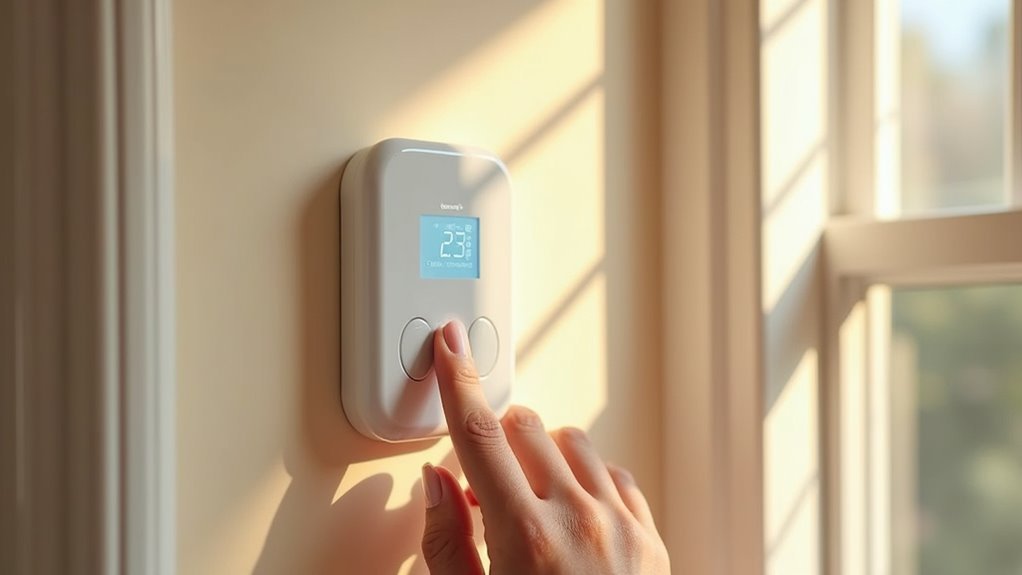
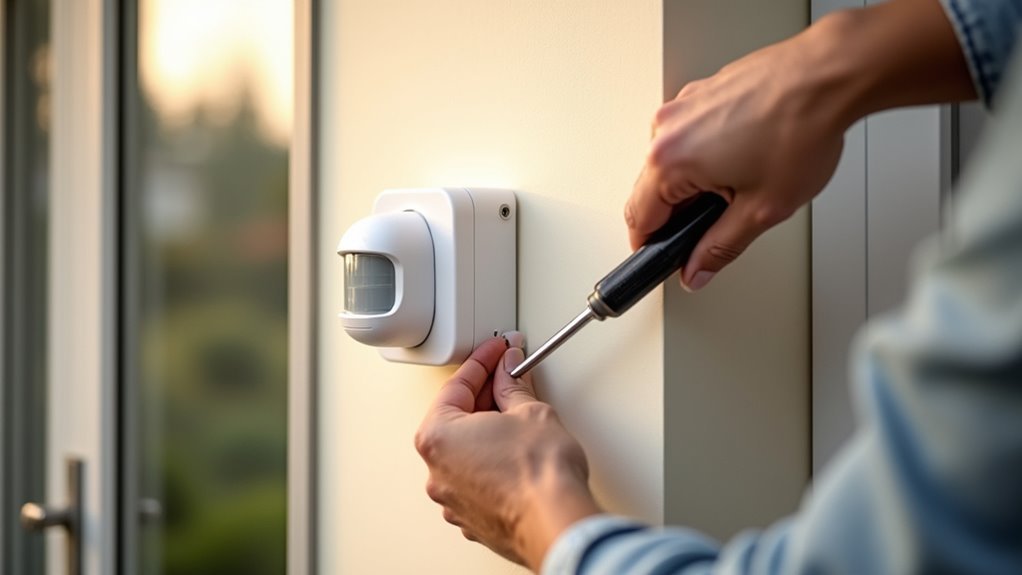
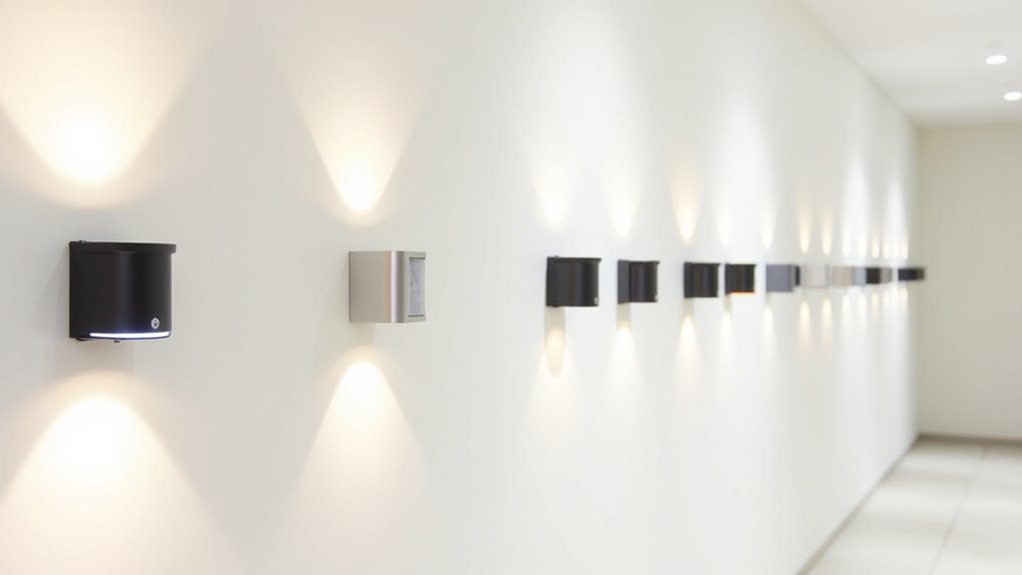
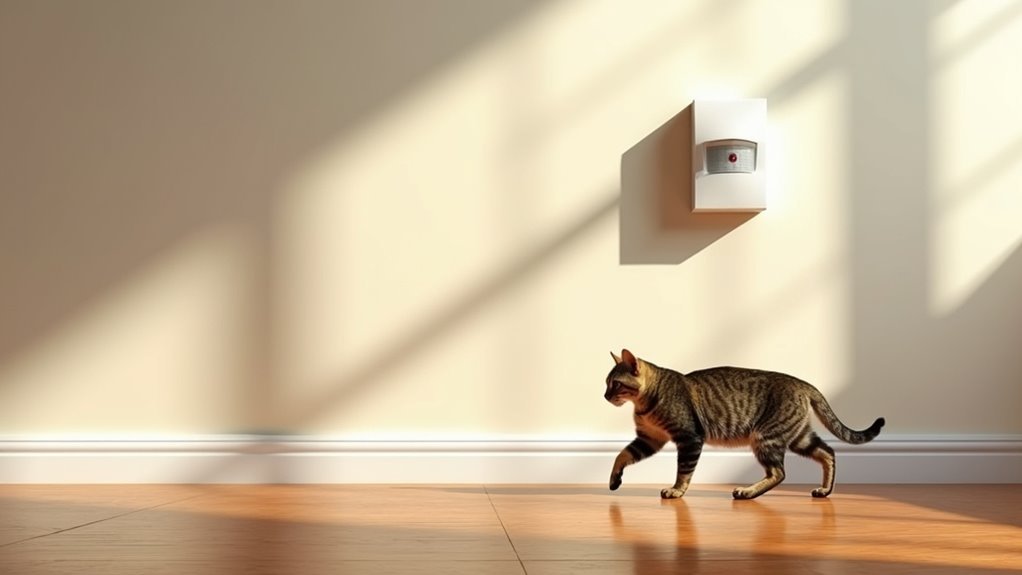
Leave a Reply